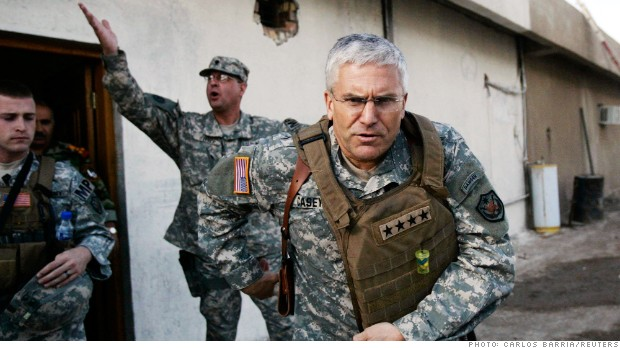 The number “42” was the answer to “the ultimate question of life” in the classic novel ‘The Hitchhiker’s Guide to the Universe’. Yet as the supercomputer providing this answer then explained, it was a pointless exercise as nobody understood the meaning of the original question.
The number “42” was the answer to “the ultimate question of life” in the classic novel ‘The Hitchhiker’s Guide to the Universe’. Yet as the supercomputer providing this answer then explained, it was a pointless exercise as nobody understood the meaning of the original question.
The world’s policymakers are in the same position, although they don’t yet realise this. They are some of the finest minds on the planet, but they have been asking a meaningless question since the Crisis began 5 years ago, namely “How do we restore growth to the pre-Crisis level?”
Their response has also been a 2-letter answer, “QE”. But even today, nobody quite knows how QE (Quantitative Easing) is supposed to work. It is vaguely thought to be a new way of borrowing that magically repays its own debt over time. But instead, the debt has kept rising whilst growth has remained slow.
Yet a moment’s thought makes it obvious that policymakers can’t print babies. And only people can create demand. So the question we really need to ask is “What is the impact of today’s ageing populations on demand?”
Put this way, it is obvious that we cannot possibly know the answer to the question:
- Between a third and a half of all adults are now in the New Old 55+ generation in most major economies
- They are in their low-demand, low-earning years
- And globally, there will be 600m more New Olders by 2030 – a 50% increase.
This has never happened before in history.
Clearly demand patterns must be very different from the past, as Q1 has shown. Seasonally it will be the strongest quarter this year, as Easter is late. Yet demand has been modest, with most shortages caused by plant outages.
Business leaders therefore need to be very careful when planning for the rest of 2014. As the blog argued in its Budget Outlook, we are in a VUCA world where Volatility, Uncertainty, Complexity and Ambiguity dominate. Simple answers such as “42” or “QE” cannot possibly be relevant to the complex questions that we now face.
In this context, a blog reader has kindly forwarded an important interview with Gen George Casey, widely credited with rescuing Iraq from near-chaos during his 2004-7 command of US troops there. In it, Casey argues:
“In reality, VUCA has never been more relevant, for the military and for business. I experienced VUCA environments in Bosnia (1996), in Kosovo (2000), and in Iraq (2004-07). Leading grew progressively more difficult in those conflicts, with Iraq unquestionably the toughest. I believe that my experiences leading in those environments can benefit business leaders.
“The reason is that the primary function of any leader is to point the way ahead. I’ve learned that doing so in VUCA environments is extraordinarily difficult. Leaders need to “see around corners” – to see something significant about the future that others don’t see. Yet the more VUCA the environment, the harder it is for leaders themselves to comprehend the situation, let alone articulate a clear way forward. VUCA environments thus become invitations for inaction — people are befuddled by the turmoil and don’t act. And to succeed, you must act!”
A quick summary of today’s key issues highlights the common sense behind Casey’s analysis:
- Volatility. Financial markets in the West are priced for perfection. What will happen when, not if, people begin to recognise that QE cannot bring recovery?
- Uncertainty. China’s new leadership have begun to slow the economy. Will they continue now GDP growth is slowing, or will they panic and do a mega-stimulus?
- Complexity. Geopolitics have begun to dominate the headlines. Does Russia’s annexation of Crimea echo the Cold War? Will social unrest grow in the Arab world?
- Ambiguity. What are the key metrics for running a business today. Are they cost-cutting to boost current profits? Or are they focused on innovation for future growth?
As Casey advises, “to succeed, you must act!” Asking the right question is thus the key need today. It is the only way to see round corners. Failing to act means the future of your business will be dependent on the success of a policy that nobody understands and that cannot work, because policymakers didn’t ask the right question.
Benchmark product price movements since January 2014 are below, with ICIS pricing comments:
PTA China, down 10%. “Average operating rate in China for April is expected to be at 57% because of operating cut backs at several units, and scheduled maintenance”
Brent crude oil, down 2%
US$: yen, down 2%
Benzene, Europe, up 1%. “Several traders and consumers noted that the upward pressure on European values was largely supply-driven, with derivative demand still not supporting any major upturn in pricing”
S&P 500 stock market index, up 1%
Naphtha Europe, up 1%. “Market is being supported by Asian petrochemical demand, while US gasoline buying appetite has fallen from its peak two weeks ago”
HDPE US export, up 8%. “Traders have said it will be necessary for producers to lower prices if they want to compete in the global market”
